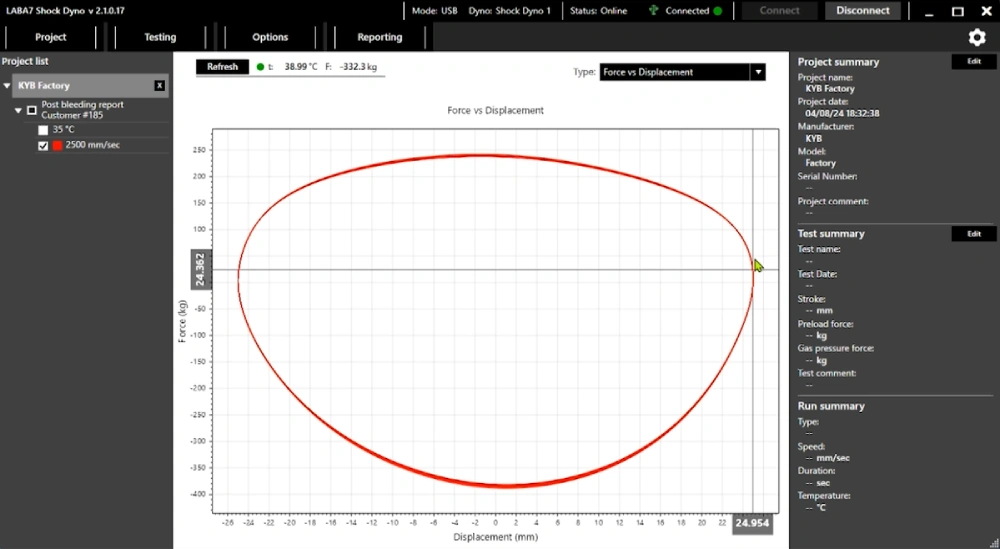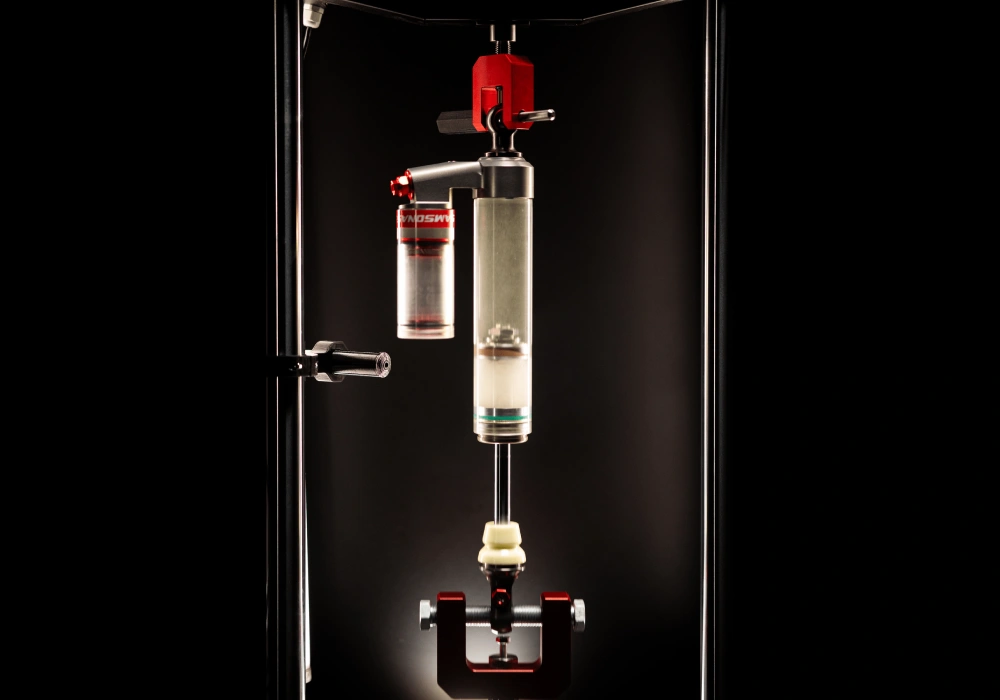For a suspension workshop, proper damper bleeding can be the difference between having a happy customer and a whole range of problems to deal with.
Some workshops prefer to invest in equipment for bleeding shocks, such as our Automatic Vacuum Bleed Pumps, others opt for keeping the manual process, but what are the implications of that? Let’s find out.
Manual damper bleeding
Bleeding a shock manually is probably the most cumbersome task any suspension workshop has daily. Not only does it require a lot of time and experience to make sure the shock is 100% bled, but it is a messy job and wastes a fair amount of consumables such as paper and oil.
Once bled and after pressurizing the shock, a common step to confirm the quality of the manual bleeding is to compress the shock and expect the damping rod to fully extend smoothly, without any sudden jolts.
However, this step only guarantees that there’s no trapped air on the body of the shock. The shock might still have some air bubbles on the compression adjuster or even the reservoir that hasn’t moved to the body, and probably won’t until the shock is cycled a few times.
Without a shock dyno, it is impossible to confirm if there are no air bubbles inside, because most of the time, the effects of a poorly bled shock, even if there’s just a residual amount of air, will only be noticeable on the higher range of operating temperature.
With our shock dynos, the testing cycles will only start once the shock reaches a certain warm-up temperature.
A well-bled shock will show a smooth damping curve throughout the compression and rebound strokes, even at higher operating temperatures.
Automatic damper bleeding
With our Vacuum Bleed Pumps, this daily task becomes a breeze. Not only can you focus your time on other tasks while the shock is being bled, but it also makes the bleeding process quicker, more cost-effective and doesn’t rely solely on experience, while also reducing human errors.
Besides that, our Vacuum Bleed Pumps help eliminate any gas dissolved in the oil, generated during the production or even the shipping of the oil.
Once bled, you can take it to the shock dyno to confirm the bleeding was done properly or to export a report for the customer as a seal of quality for the job done.

Conclusion
For any suspension workshop concerned about the quality of the service they provide, having a Vacuum Bleed Pump has to be on top of their wishlist.
Delivering shocks properly bled is not even in question, and the gains a workshop can get from such equipment go far beyond cost-savings and scalability. The peace of mind you get knowing you’re providing a top-notch service every time is priceless.
For more information contact us.
You also might like these articles:

